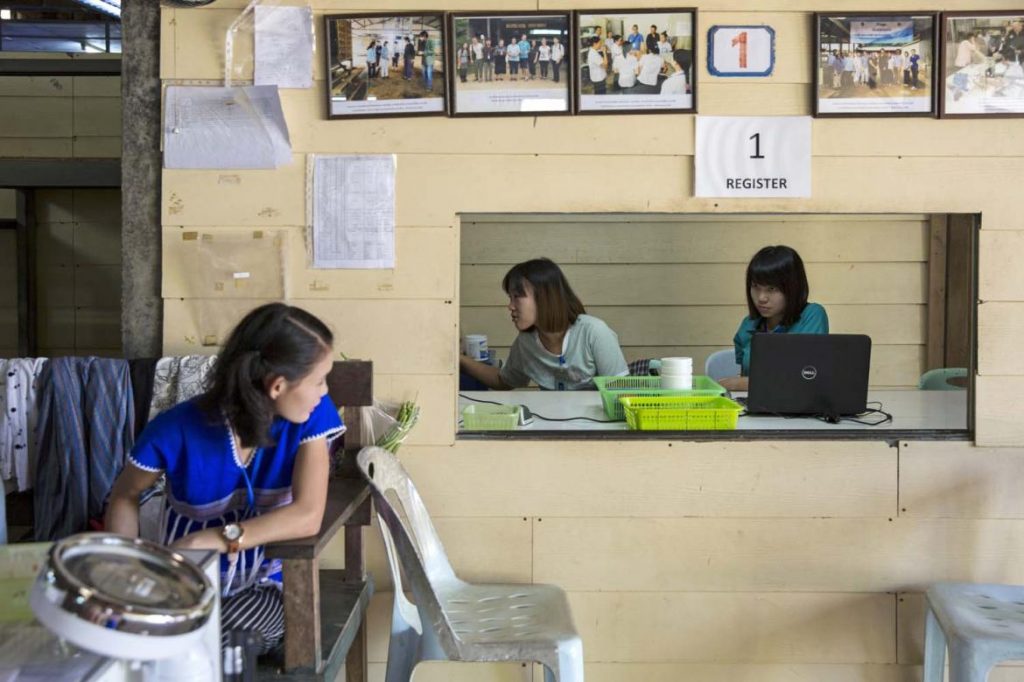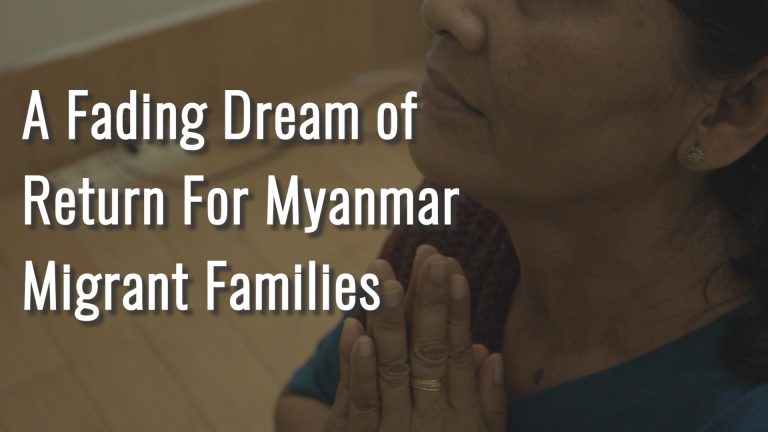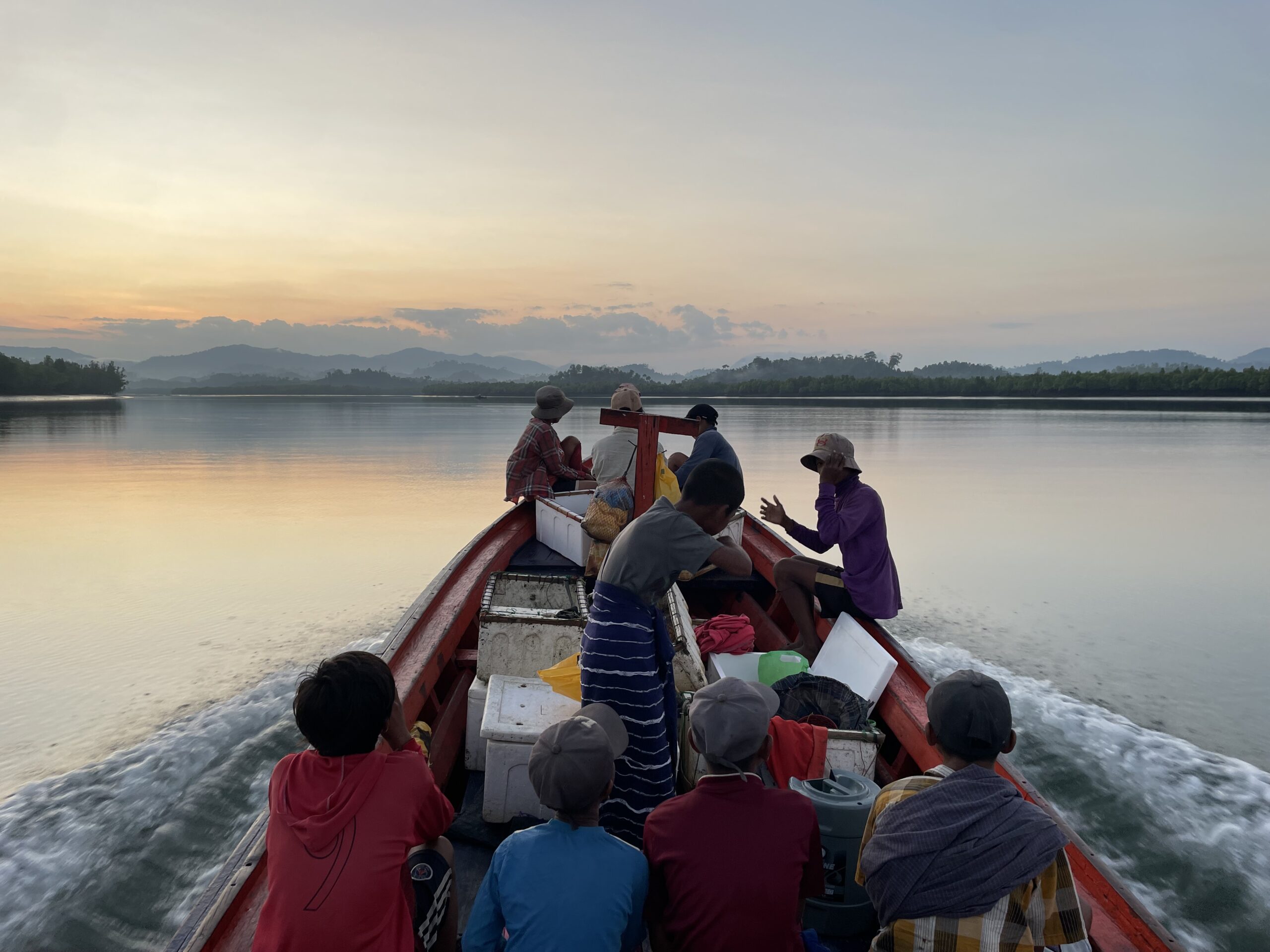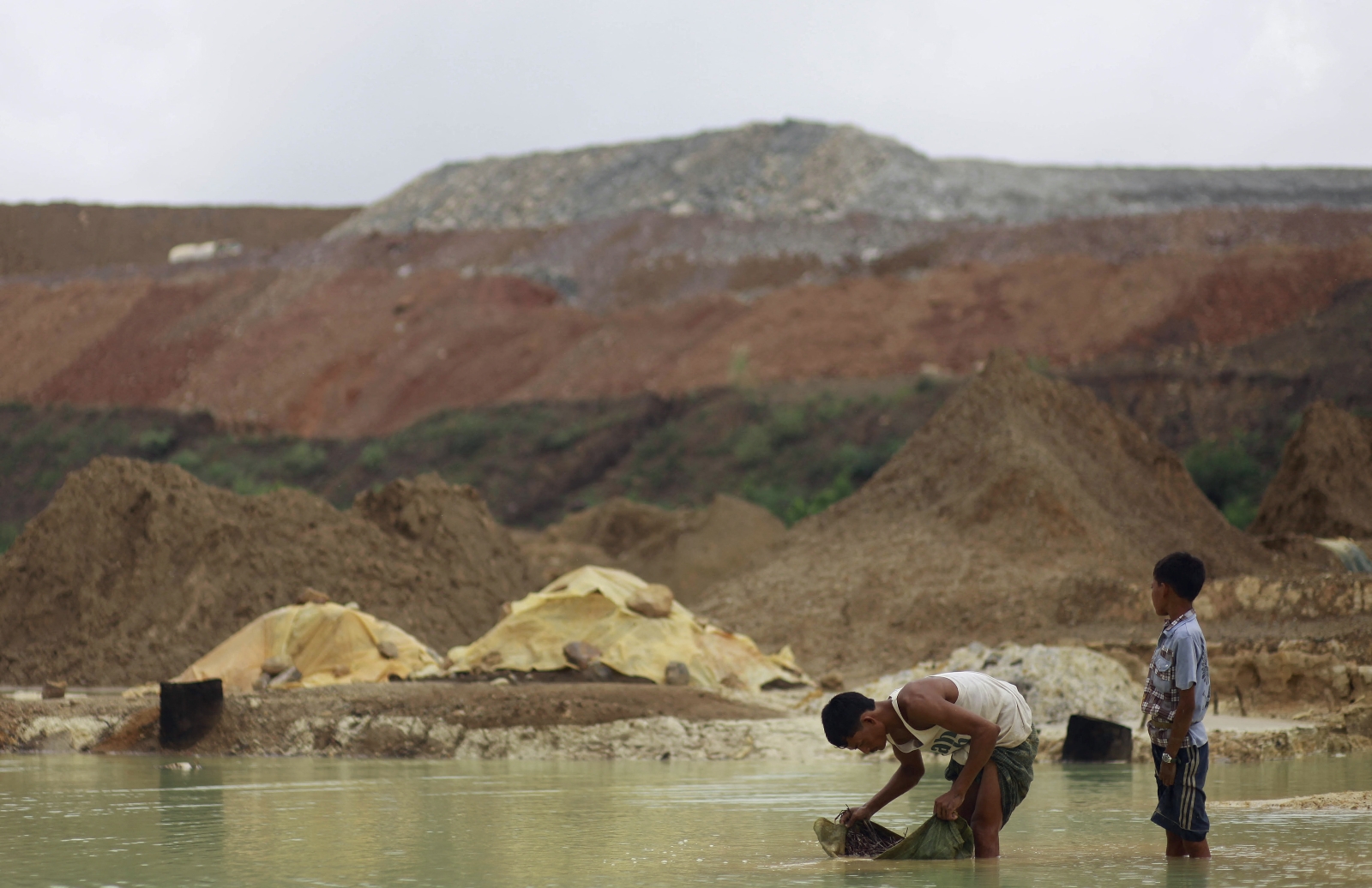Debilitating mosquito-borne diseases pose an increasing threat to migrant workers and refugees just across the border in Thailand, where clinics running on dwindling foreign aid struggle to meet needs.
By LAURE SIEGEL | FRONTIER
Photos LUKE DUGGLEBY
IN 2019, more than 1.3 million people in Southeast Asia were infected with dengue fever. The cyclical epidemic was exacerbated by poor state health infrastructure and constraints on access, as well as climate change and the increased movement of goods and people.
In this context, and despite declining foreign aid, non-government clinics along the Thai-Myanmar border have been at the forefront of regional efforts to contain dengue and chikungunya, another mosquito-borne virus that has spread northwards from Thailand’s deep south.
These diseases impose a particularly heavy burden on poor migrant households.
“This year, me, my children, everyone has had dengue fever or chikungunya, and sometimes both,” said Mr A. Salam, director of MAP Foundation, a grassroots non-government organisation that defends Myanmar workers’ rights and is based in the Thai border city of Mae Sot, opposite Myanmar’s Myawaddy.
Support more independent journalism like this. Sign up to be a Frontier member.
Mae Sot is one of the main points of entry for the estimated 3-4 million Myanmar migrant workers in Thailand. In the factories and fields around Mae Sot, about half of the estimated 100,000 Myanmar workers are working illegally and options for affordable health care are sparse, said Salam.
“A handful of clinics run by NGOs are free but are only suitable for basic care and far from the city centre,” he said. “They can pay for a consultation at the Mae Sot public hospital, but the waiting times and the language barrier discourage most of them. They prefer to go for a quick service at private clinics because they try to avoid losing days of work or leaving their children at home for too long.”
“The older people make their own herbal medicines or return to their villages in Burma to die to avoid leaving their children in debt,” he added.
A decade ago, Daw Nyin Nyin Kyi, 31, started travelling between the Mon State capital, Mawlamyine, and the markets at Mae Sot, where she could work illegally for about 200 baht (K9,890, or US$6.70) a day, some of which was spent on bribes.
“The law says that non-Thai people cannot sell goods directly in Thailand. We can only work for someone else, even with a valid work permit. So everyone in the market pays off the police and municipal authorities to be able to work,” said Nyin Nyin Kyi, who has been arrested with her husband four times for working illegally in Thailand. They have gone into debt to raise bail.
In June, Nyin Nyin Kyi was diagnosed with chikungunya after suffering a bad headache and aching bones. “I couldn’t get up; I was very scared,” she said. “A doctor at a private clinic gave me medication but I had to go back several times because rashes appeared all over my body. The whole treatment cost 1,500 baht.”
When one of her children caught the same virus a few days later, her husband had to stop work and the couple had no income for three weeks. “We had to borrow 10,000 baht from a loan shark to be able to feed ourselves,” Nyin Nyin Kyi said. “Since then, we have only been able to pay the interest, which is 2,000 baht a month. I want to go back to Myanmar, but first we have to pay off our debts, which amount to 30,000 baht, because the loan sharks might find us on the other side of the border.”
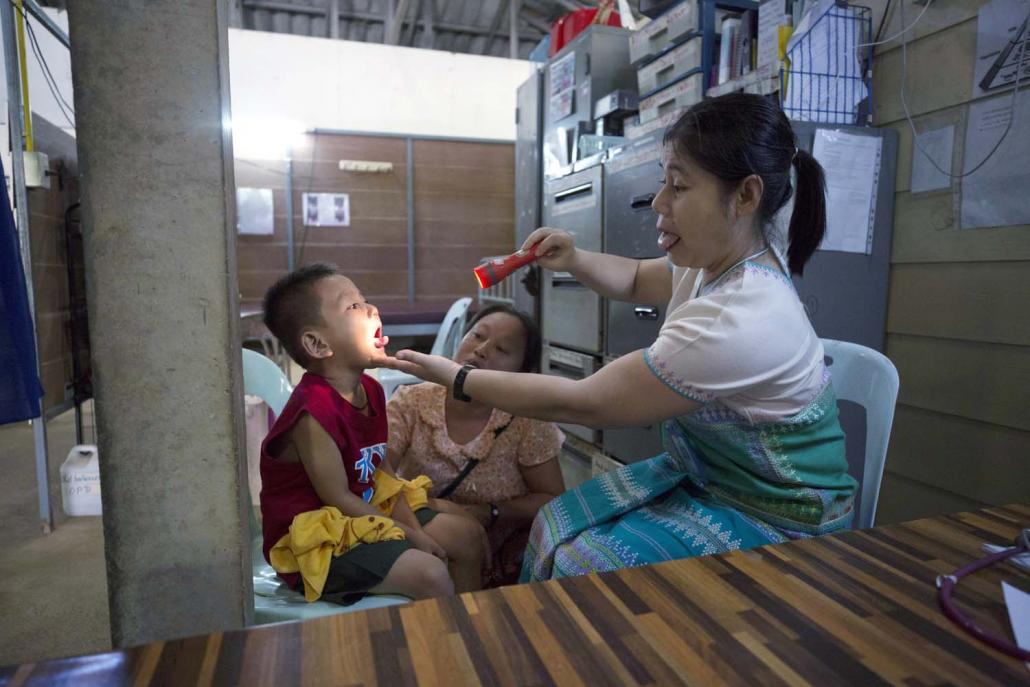
Candy Beau (right), a medic at the Mae Pa clinic, inspects a sick Myanmar child. Candy Beau herself recently contracted Chikungunya and dengue and is dealing with prolonged symptoms. (Luke Duggleby | Frontier)
Ma Hlaing Hlaing Hla Htwe, 34, also from Mon State, left for Thailand aged 15 after her family’s hut and paddy fields were destroyed in a storm. She started working as an undocumented domestic helper in Bangkok for 800 baht per month but had spent the last decade in Mae Sot, working in the markets for 300 baht a day.
However, her work permit is no longer valid because it bears the name of her former employer, who is currently in prison. She cannot afford to renew it, having spent her savings during the last rainy season on health care.
“My daughter, husband and I had Chikungunya in July. I had to stop working for 10 days and spend 1,800 baht for a diagnosis in a private clinic just for myself,” she said. “I’m not sure if I’ll find a stable job again because the economy in Thailand is bad at the moment. Tomatoes, chili, broccoli no longer sell in Mae Sot because they are now produced in Myanmar at a lower cost.”
She said she wanted to go back to her village, where her eldest daughter lives.
“Even though we would have to pay to be treated in Myanmar hospitals, everything is cheaper than here and it would be easier to find a job, so I think we would do better,” she said.
Many migrant workers in the area around Mae Sot who do not have a work permit, which would give them access to health insurance, go to the Mae Tao Clinic when they need medical care.
The clinic’s founder and director, Dr Cynthia Maung, was among the thousands of people in Myanmar, then Burma, who fled to the Thai border after the 1988 national uprising against military rule. The clinic began in 1989 as a primary care centre to treat the war wounds, malaria and tuberculosis of the thousands of students hiding in the jungle. From the early 1990s, humanitarian organisations provided assistance to what became the Mae Tao Clinic, which also hosts a primary school for 800 migrant workers’ children.
Most of the patients received by the clinic are from Myanmar, of whom 80 percent do not have identity documents. There are two doctors managing 50,000 patients, 2,000 births and 1,000 blood transfusions a year. In three decades, 3,000 medical students have also been trained at the clinic, before returning to work in community centres in ethnic minority areas of Myanmar.
Since 2011, when democratic reforms began, international donors have cut border aid to focus on development projects channelled through Yangon in cooperation with the Myanmar government. This means that, at border clinics like Mae Tao, needs are increasingly outpacing resources.
Cynthia Maung says that a growing number of delayed development afflictions such as cerebral palsy are plaguing Karen children living near the border. These, she said, “can be caused by malnutrition, exposure to mining waste or lack of oxygen during a difficult delivery”.
“In some Karen villages, there used to be frost in winter, but it is much warmer now and there is much less forest,” she said. “At the moment, we are really concerned about water quality and child nutrition as well as drug use, which has spiked since the ceasefire [in 2012 between the Myanmar military and the Karen National Union]”.
smru_mae_sot-2_copy.jpg
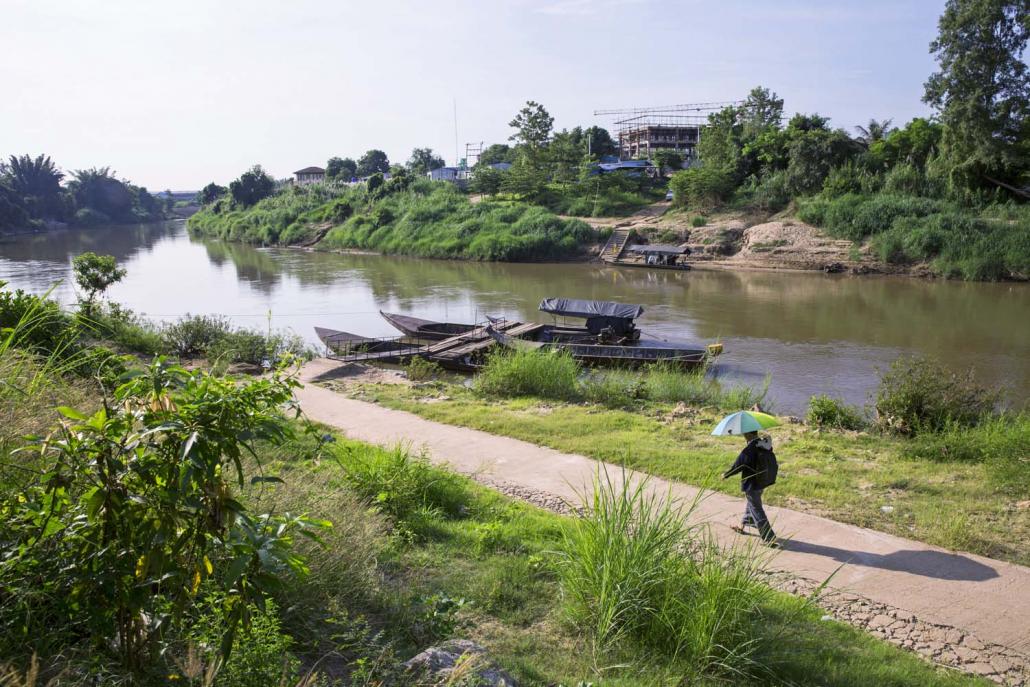
A health worker from the Mae Pa clinic on the Thai-Myanmar border walks to the boat crossing over the Thaung Yin (or Moei) River to Myanmar on the far bank. (Luke Duggleby | Frontier)
With more diseases to manage, Cynthia Maung said the clinic is running on about 70 million baht in donations each year, compared to 100 million baht before 2012.
“The average cost of an out-patient is 300 baht and 3,000 baht for an in-patient, so we will have to ask those who can contribute to cover 20 percent of the cost of their treatment from next year. For the past two years, we have been able to pay only 85 percent of our employees’ monthly salary of 6,000 baht,” she said. “We are looking at approaching donors from Thailand and Myanmar instead of relying on international aid.”
The Shoklo Malaria Research Unit (SMRU), a field station of the Faculty of Tropical Medicine at Mahidol University in Bangkok, operates a laboratory and three clinics around Mae Sot. Because of inadequate healthcare in Myanmar, the free basic healthcare offered by these clinics is used not only by migrant workers in Thailand but also families crossing the border.
SMRU director Dr François Nosten remembers when the border area was covered in jungle and plagued by Plasmodium falciparum, the parasite species that causes the most severe form of malaria. Overall health indicators were far worse than today, he added.
“In terms of child mortality, maternal health and the fight against malaria, I have seen tremendous progress in the region since I arrived in 1984,” he said. “These communities are doing a little better economically and are experiencing much less fighting, but we need to improve access to health care.”
He added that “they are still deprived of their rights and exploited, their natural resources have been destroyed, their land has been grabbed”.
The situation is worse in the 10 refugee camps along the Thai-Myanmar border, where only two organisations are still providing regular healthcare for 97,000 people – Maris International and the International Committee of the Red Cross.
Disruption has come to the border region in the form of the ambitious Shwe Kokko “new city” project, being developed by the Kayin State Border Guard Force, an ethnic Karen armed group under the command of the Myanmar military, in partnership with Hong Kong-registered Yatai International Holdings Group. According to project documents, it will cover an area of 72,843 hectares (180,000 acres) on a bend of the Thaung Yin (or Moei) River 16 kilometres north of Myawaddy, and will cost $15 billion. Plans envisage a high-tech hub with an airport, luxury housing, a 1,200-room hotel, casinos, supermarkets and an industrial zone.
Just across the river from the project site, which forms the border with Thailand and is illegally crisscrossed by ferries throughout the day, is the Mae Pa clinic, one of SMRU’s centres. Dr Tobias Brummaier, a German general practitioner who has worked for two years at the clinic, talked of the spillover effects of an influx of Chinese construction workers at Shwe Kokko.
“More and more Chinese workers come into the area to marry Karen women, settle and buy land,” Brummaier said. “They [cross the border to] come to our clinics when their wives are pregnant and it’s difficult for our staff who don’t speak Chinese. We try to explain to them that this clinic is for the more vulnerable locals who can’t afford anything but we expect more of them to come until a hospital is built as part of the complex on the [Myanmar] side.”
smru_mae_sot-70_copy.jpg
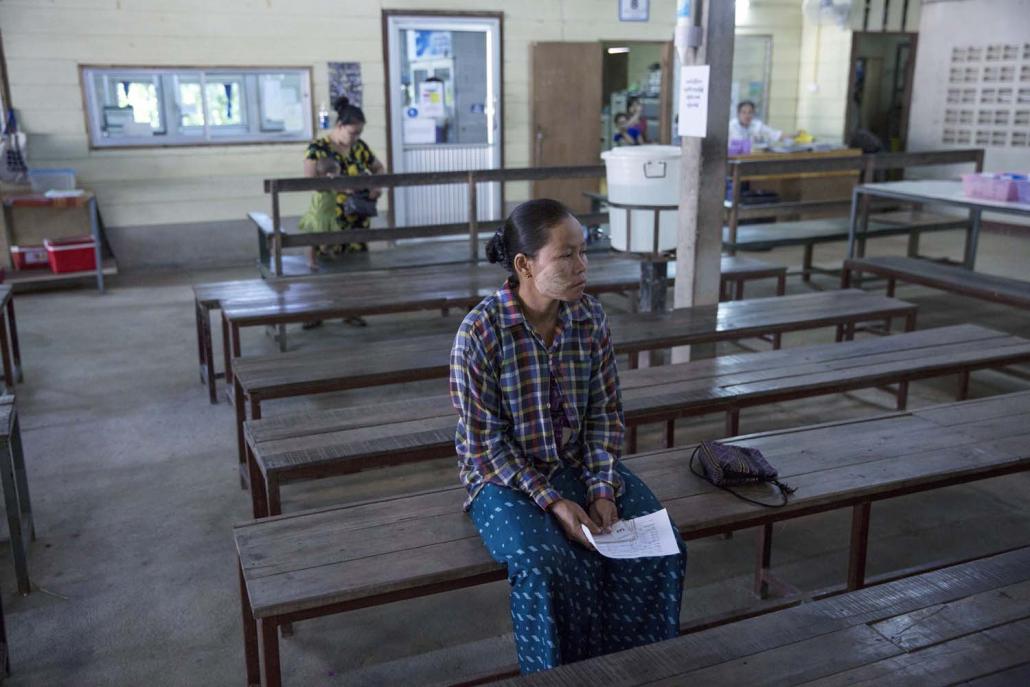
A sick Myanmar lady waits to be treated at the Mae Pa health clinic. (Luke Duggleby | Frontier)
The Mae Pa Clinic has about 100 staff who manage an average of 12,000 consultations a year, as well as monitoring pregnant women. This season, the clinic treated 1,000 cases of dengue fever and 500 cases of chikungunya, despite 60 staff members themselves becoming infected with chikungunya.
SMRU director Nosten points to the low levels of socio-economic development that lie at the heart of the various epidemics: “One doesn’t die from dengue if there is affordable blood transfusion and IV fluid available nearby.”
“Even if we have appropriate and cheap vaccines, and that could take another decade for dengue fever, we still would have to administer it to everyone,” he said. “For that, we need access to communication, roads, electricity – in other words, a serious infrastructure development policy, as well as proper investment in the health and education sectors, none of which is the case in most countries in the region.”
Otherwise, he said, “people will remain trapped in a cycle of poverty each time they get sick.”
On December 18, workers’ rights organisations gathered in Bangkok at a forum titled, “Rating migration policy under Gen. Prayut’s leadership: boon or bane?” Khun Chuwong Seangkong, operations manager at World Vision Foundation of Thailand, said at the event, “ASEAN governments need to negotiate to set up a regional health fund for migrant workers.”
“Myanmar doesn’t want to contribute to their health costs because they work in Thailand and Thailand doesn’t want to contribute to their social security because they know most of them will go back to Myanmar,” Chuwong said.
“Relying on NGO funding for the health security of workers is a way for governments to discharge themselves from what should be their responsibility,” he said. “Health insurance should be a state policy for every worker in the country, not an NGO initiative dependant on donations, as it’s not possible to rely on international funds for humanitarian aid anymore.”


